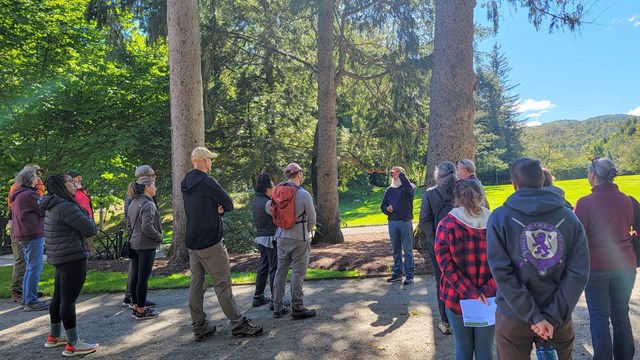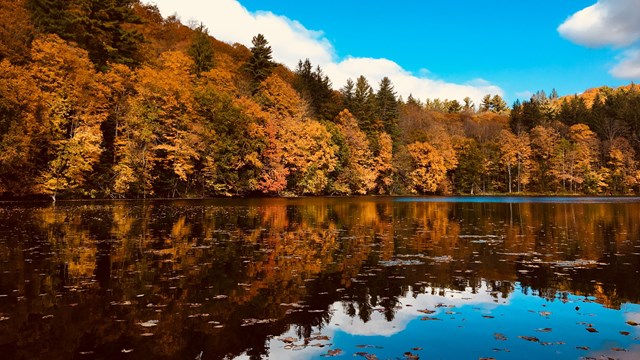
NPS Photo / Kyle Burton Marsh-Billings-Rockefeller National Historical Park is home to only a few species of reptiles. Painted and snapping turtles can be found by the Pogue, the park's 14-acre pond. Milk, garter, and redbelly snakes can be found near trails, in tall grass, or in the forest understory. Management practices have been established to help protect the reptiles within the Mount Tom Forest. Limiting human activity within the Pogue, establishing riparian buffer zones, and encouraging course woody debris on the forest floor are all ways that the park’s biodiversity is maintained. With some exceptions, reptiles are ectotherms; their internal body temperature is regulated by outside environmental factors. Warmer temperatures aid in digestion and help maintain normal body function. Reptiles can often be found sunning themselves to absorb solar radiation or on warm rocks. In the winter, Reptiles will entire a state known as brumation. Similar to hibernation, brumating reptiles will build up fat reserves before winter. During the colder months, their metabolism and heart rate slow. The reduced physiological state is a mechanism to help reptiles survive until the warmer temperatures reappear in the spring. 
NPS Photo / Kyle Jones SnakesSnakes play an important role in keeping the ecosystem in balance. They will eat rodents, frogs, birds, and even insects. In order to swallow prey bigger than their own skull, snakes will use their loosely connected jaw bones and elastic skin to “walk” their mouths over their prey in a movement called the Pterygoid Walk. This adaption allows them to swallow larger prey, increasing their available prey options and reducing the number of times they may need to feed. Snakes often goes days or even weeks between meals. Common Garter snakes are the most common snake in Vermont and the Mount Tom Forest. Identified by their dark bodies and yellow dorsal stripe, garter snakes can grow up to 30 inches long. 
NPS Photo TurtlesIn the Pogue, snapping and painted turtles take advantage of the abundant habitat and vegetation. Common snapping turtles can grow between 8-14 inches in length and weigh up to 35 lbs. As omnivores, common snapping turtles will eat vegetation, insects, fish, and even small birds like ducklings. Although significantly smaller than the snapping turtle, painted turtles also have a diverse diet of insects, fish, and aquatic plants. Both turtles and snakes are important players in the Marsh-Billings-Rockefeller ecosystem, helping to maintaining the balance in the Pogue and beyond. Reptiles observed in the parkTurtlesSnapping Turtle (Chelydra serpentina) Painted Turtle (Chrysemys picta) SnakesMilk Snake (Lampropeltis triangulum) Redbelly Snake (Storeia occipitomaculata) Common Garter Snake (Thamnophis sirtalis) 
Working Woodlands Workshops
RVSP today for workshops geared towards local land stewards on the topics of forest biodiversity, land stewardship, and more! 
Natural Resource Monitoring
The Northeast Temperate Inventory & Monitoring Network posts annual reports on forest health, air quality, and more. 
Working Woodlands on YouTube
View dozens of past virtual workshops on the Marsh-Billings-Rockefeller NHP YouTube channel. |
Last updated: October 12, 2024
